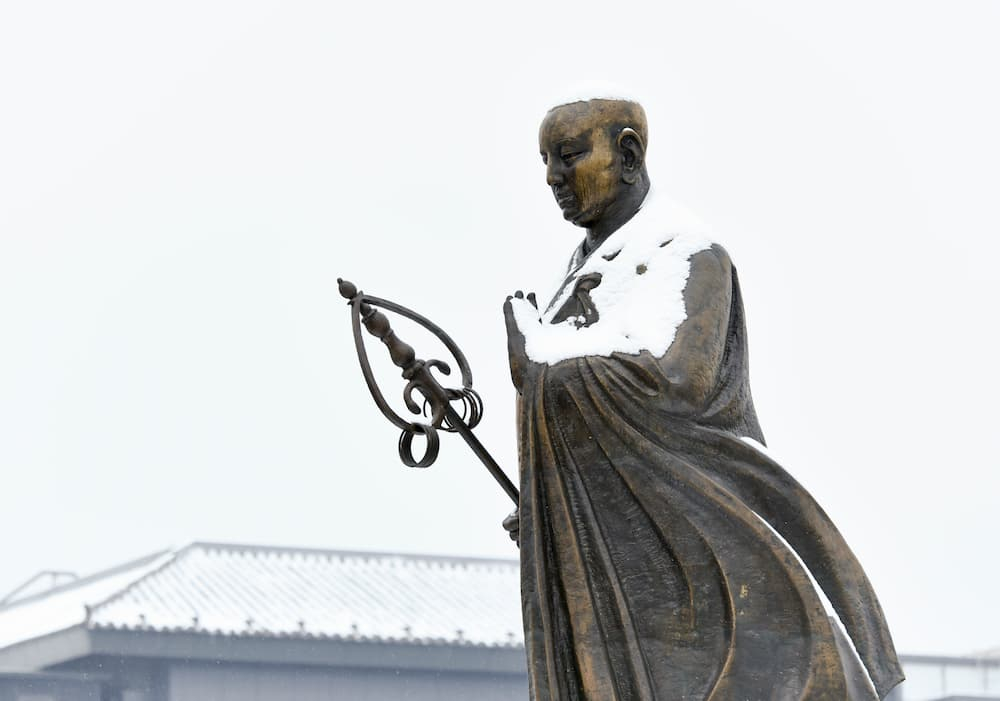
Xuanzang’s Pilgrimage for Buddhist Scriptures
Splendid
Chi Culture
Topic
Xuanzang’s Pilgrimage for Buddhist Scriptures
Xuanzang (600–664), original name Chen Yi, was an eminent Buddhist monk of the Tang dynasty (618–907). He was honored with the title of Tripitika Master (Master of the three-fold canon) because he was well-versed in Buddhist writings, including doctrine, discipline, and metaphysics. He was universally recognized as a Buddhist scholar, a religious activist, and a translator. He made outstanding contribution to various fields, including the history of Sino-Indian cultural exchange, the history of China’s communications with foreign countries, the history of Buddhism in China, and the history of translation in China.
Xuanzang’s search for the dharma took him through nearly one hundred and forty kingdoms and territories on a journey that lasted nineteen years. By the end of his search, he was thoroughly conversant with various Buddhist doctrines and theories. After he returned home, he founded the Weishi (Consciousness/Representation-only) school of Buddhism, but known more widely as the Faxiang (Dharma characteristics) school of Buddhism. The school focused on the Dharma (Law). It flourished during the Tang dynasty and influenced the development of Buddhism in Japan and Korea among other places.
By the time he died, Xuanzang had translated seventy-five works in 1,335 juan (fascicles) of Buddhist sutras. His scriptures were noted for being fluent, smooth translations which preserved the meaning of the original texts. Whether they are judged on quantity or quality, they represent an outstanding feat. Most of the translated works come from the Mahayana (Great vehicle) texts found in the Sutra on the Great Perfection of Wisdom. He translated six hundred juan of these texts, including the widely known Heart Sutra. The next group of texts he translated were from the yogic tradition of the Yogacara (whose Chinese version is Weishi) school. These totaled twenty-one titles in two hundred and one juan and include such basic sutras as Jie shen mi jing (Resolving enigmas) and Yujia shi di lun (Treatise on the stages of yogic practice). He also translated some sutras of the esoteric sects.
After returning from his travels in the west, Xuanzang devoted himself to translating Buddhist texts and propagating Buddhist teachings—his diligence figure has left an indelible imprint in the Guanzhong Plain. In 645, he organized a translation workshop at the Hongfu Monastery, and in little more than three years, he translated the Da Pusa zangjing (Mahayanpitaka-sutra), which totals 178 volumes. His travelogue Da Tang Xiyu ji (Record of a journey to the West during the great Tang dynasty) describes 110 kingdoms and twenty-eight legendary regions in western and southern Asia. In the travelogue he gives accounts of mountains, rivers, regions, cities, local products, and customs. This work not only allowed people to understand the customs of these places, it also provided a great deal of historical data that could be used by those in the field of Indian archaeology. In modern times, it has become an authoritative work for studying ancient Indian issues. He translated the Laozi and the Dacheng qixin lun (The awakening of faith) into Sanskrit and introduced them to India. In 648 Xuanzang became the first abbot of the Ci’en Monastery. During his ten years at the monastery, he produced more than forty works in five hundred juan of translations into Chinese. He also constructed the Big Wild Goose Pagoda. In 659, he moved to the Yuhua Monastery where he died (entered parinirvana—the Nirvana after death) in 664. During his five years at the monastery, he translated 682 juan of Buddhist sutras. He translated other works as well, often at places other than the monastery; some of these include: She Dacheng lun wuxing shi (Summary of the great vehicle—explanation on the absence of intrinsic existence) translated at the Western Hongfa Court of the Ziwei Hall in Xi’an; the Heart Sutra at the Cuiwei Hall in the Zhongnan Mountains; and both the Apidamo fazhi lun (Foundations of knowledge) and the Dapi posha lun (Great exegesis of Abhidharma) at the Western Shunxian Pavilion of Ningyun Hall in Chang’an.
After his death, he was first buried at Yunjing Monastery, but was later moved to Xingjiao Monastery, where he had resided and preached. The foremost exponents of the Faxiang school, two of Xuanzang’s disciples—Master Kuiji and Master Yuance, were also buried there. As the burial site of three Faxiang school masters, the monastery shows the development of Buddhism after its introduction by Xuanzang at Chang’an, and the influences he had on Asian kingdoms after his journey to the West. In June 2014, Xingjiao Monastery, as one of the heritage sites under the rubric “Silk Road: the Routes Network of Chang’an—Tianshan Corridor” was inscribed on the World Heritage List.



